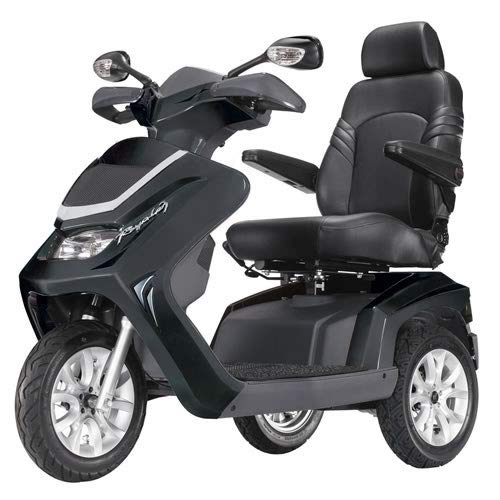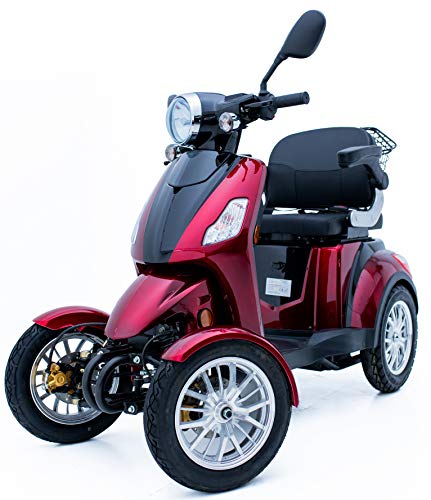10 Untrue Answers To Common Modern Mobility Solutions Questions Do You…
페이지 정보
작성자 Renato 댓글 0건 조회 177회 작성일 24-11-27 09:11본문
 Modern Mobility Solutions
Modern Mobility SolutionsExplore how cutting-edge technologies are transforming mobility. From electric power mobility scooter vehicles to personalized services, these solutions are changing the way we travel.
Learn how optimizing transportation systems can lead a more efficient system, which will result in less congestion and a more sustainable urban development. Our MQTT EMQX platform is ideal for real-time data exchange across these systems, since it is flexible and designed to accommodate the use of a large number of devices simultaneously.
Electric Mobility
Electric mobility is the use of electric power to power vehicles, which includes 3 wheel foldable electric mobility scooter bikes and automobiles. This technology reduces carbon emissions and air pollutants and provides consumers with an easier and safer travel option. However, the transition to electric mobility scooters for sale cheap mobility isn't without obstacles. Some of the issues are limiting range anxiety, ensuring the availability of a reliable charging infrastructure and reducing energy costs.
To help address these challenges, a variety of solutions are being developed all over the world to encourage electric mobility and reduce environmental impact. These solutions include battery swapping, improving battery technology to increase range, reduce charging time, and increasing the number charging stations. Tax credits and subsidies can be used by governments to encourage consumers to purchase EVs.
Increasing consumer demand for sustainable transport options has led to an explosion in innovations designed to improve sustainability. This includes mobility-as-a-service, smart parking and traffic management systems, shared electric mobility, and even high-speed electric vertical take-off and landing (eVTOL) taxis.
E-mobility plays a key role in the larger picture of the future. It reduces emissions and improves the transportation system for urban populations. However, it requires a massive change in the transportation system as well as a completely new sustainable energy model that can fully benefit society.
As a result it is crucial to be aware of the consequences and risks associated with every aspect of this revolution. This includes the need to consider the impact on the environment, economy, and the entire society. There are numerous tools available to assess the impact of technological advancements. These include life cycle assessment methods.
These tools can help businesses make informed decisions on the best methods to invest in e-mobility. By integrating multiple solutions into their businesses they can maximize the benefits of mobility. This will lead to a sustainable future for our planet. With over decades of automotive safety engineering expertise, TUV SUD can provide comprehensive support to companies on their journey to electric mobility. From the earliest blueprints to the commercialization of the product, we're your one-stop facilitator for the secure integration of electric mobility technologies.
Connectivity
In a world where customer experience has become the new benchmark for service seamless integration is essential to creating an effective mobility solution. Find out how the deployment of connected vehicles and integrating them into an intelligent system can enhance the way your organisation operates.
The rise of shared mobility services is transforming the way people travel. These innovative urban transportation approaches offer alternatives to cars and offer a promising method to reduce carbon emissions and congestion in cities.
However they face many challenges to becoming fully established as viable alternatives to personal car ownership. These include the need for a sufficient infrastructure for transport and the need to make fares affordable and the application of the equity principle that calls for the same accessibility to mobility solutions for all sections of the society.
Despite these obstacles the use of shared mobility services has been growing fast. These solutions make use of data and algorithms that are smart in order to allow travellers to choose and buy several transportation options within one application. They also offer real-time updates and personalised services and are more convenient than traditional methods of transportation.
One of the key factors driving the growth of the sector is the increased availability of electric 4 wheel mobility scooters vehicles at a reasonable price and charging stations. More and more consumers are opting for these eco-friendly and efficient methods. And they're being joined by cities and towns that are investing in sustainable, green transportation infrastructure to encourage cycling, walking public transportation, walking, and sharing vehicles as alternatives to driving.
Micromobility solutions are also that are driving the shift to sustainable commutes. These light vehicles, typically electric scooters and bikes are being integrated into urban transport systems. They provide a first- and last-mile solution for commuters while reducing their need for private cars.
Public-private partnerships are essential to overcome these challenges and ensure the viability of micromobility in the long run. This is particularly important for urban mobility which requires a substantial amount of investment and needs to be tailored to the local environment. MaaS (mobility as a service) platforms are a good example of this approach that have been developed by a mix of urban transportation operators, technology companies, and payment providers.
Sustainability
Sustainability is a growing issue for modern mobility solutions as governments and consumers require environmentally friendly transportation options. Find out how seamless integration between transportation modes, real-time information, and personalised services transform the experience of commuting and help reduce environmental impact.
The emissions from fossil fuels are among of the primary causes for climate change. They also cause pollution in the central city areas, congestion, and health problems for the public, among others. By promoting sustainable new mobility options, like cycling and walking, people can enjoy greater efficiency in their journeys, as well as an improved quality of life.
Another way to promote sustainable mobility is to make sharing of vehicles, which generate more revenue from passenger fares than their cost of operations. They are therefore less likely to require taxpayer funding as compared to traditional public transportation.
However sustainability is a priority, and sustainable mobility requires a broad strategy that goes beyond reduction of traffic in cars and enhancing the efficiency of infrastructures in place. It must include the promotion of sustainable transportation options and the redesigning of urban space in order to reduce the use of private vehicles.
Several smart mobility measures will increase the appeal and accessibility of urban areas by encouraging the shift towards walking and cycling, as well as improving the conditions for public transport as well as teleworking, biking, and walking. They can also incorporate strategies to raise the perceived cost of motorized vehicles as well as encourage an modal shift towards active and public transport.
The introduction of congestion fees for instance, for example, can encourage drivers to think about alternatives than their own vehicle. Optimizing traffic flow through intelligent road systems can increase vehicle efficiency and security. Furthermore, the use of IoT technology enables vehicles and infrastructure to communicate, allowing monitoring of driver behaviour in real time and detecting congestion sources. These data are used to modify the traffic management system to suit which reduces congestion and improves the overall efficiency of transportation systems. This improves the standard of living for all with less noise and pollution.
Enterprise Mobility
Enterprise mobility is the capability employees to work from anywhere with a variety of devices. This technology includes mobile devices, cloud storage, and applications that allow employees to access their data and communicate with colleagues from anywhere. Enterprise mobility solutions can improve communication and facilitate more efficient decision-making. They can also help reduce the amount of paper and storage space required. Employees can, for example, upload a presentation to cloud-based storage from their desktop PC, and then access it through a mobile device in order to present to clients.
The modern industry of mobility is constantly evolving to meet the needs of both businesses and consumers. The increasing concern about sustainability is driving the demand for eco-friendly transportation options, which can be achieved with various innovative solutions. These include telematics systems that enable infrastructure and vehicles to connect to each other, improving the flow of traffic and reduce congestion. These solutions also allow for the integration of various modes of transportation to provide a an effortless, personalized experience.
Mobility solutions should be designed to enhance customer and guest lives. Hotels, for instance could benefit from providing its staff with mobile devices that allow them to quickly and easily access information about guests. This would allow them to better serve their guests, thereby increasing customer satisfaction and loyalty. In the same way, healthcare providers can provide better care to patients by providing them with the tools needed to work remotely.
 To take advantage of these features, companies should invest in enterprise mobility management (EMM). This includes applications and devices that monitor the security and privacy of both personal and business-owned devices. They also safeguard sensitive data from cyber attacks and provide a safe experience for users. It also helps companies save money by avoiding the expensive costs of replacing or repairing damaged or stolen devices. EMM can help support BYOD initiatives that allow employees to use their devices for work. It is crucial to have an acceptable use policy before the implementation of EMM. This will establish clear expectations regarding employee behavior and help reduce the risk to the company's security of data.
To take advantage of these features, companies should invest in enterprise mobility management (EMM). This includes applications and devices that monitor the security and privacy of both personal and business-owned devices. They also safeguard sensitive data from cyber attacks and provide a safe experience for users. It also helps companies save money by avoiding the expensive costs of replacing or repairing damaged or stolen devices. EMM can help support BYOD initiatives that allow employees to use their devices for work. It is crucial to have an acceptable use policy before the implementation of EMM. This will establish clear expectations regarding employee behavior and help reduce the risk to the company's security of data.댓글목록
등록된 댓글이 없습니다.

